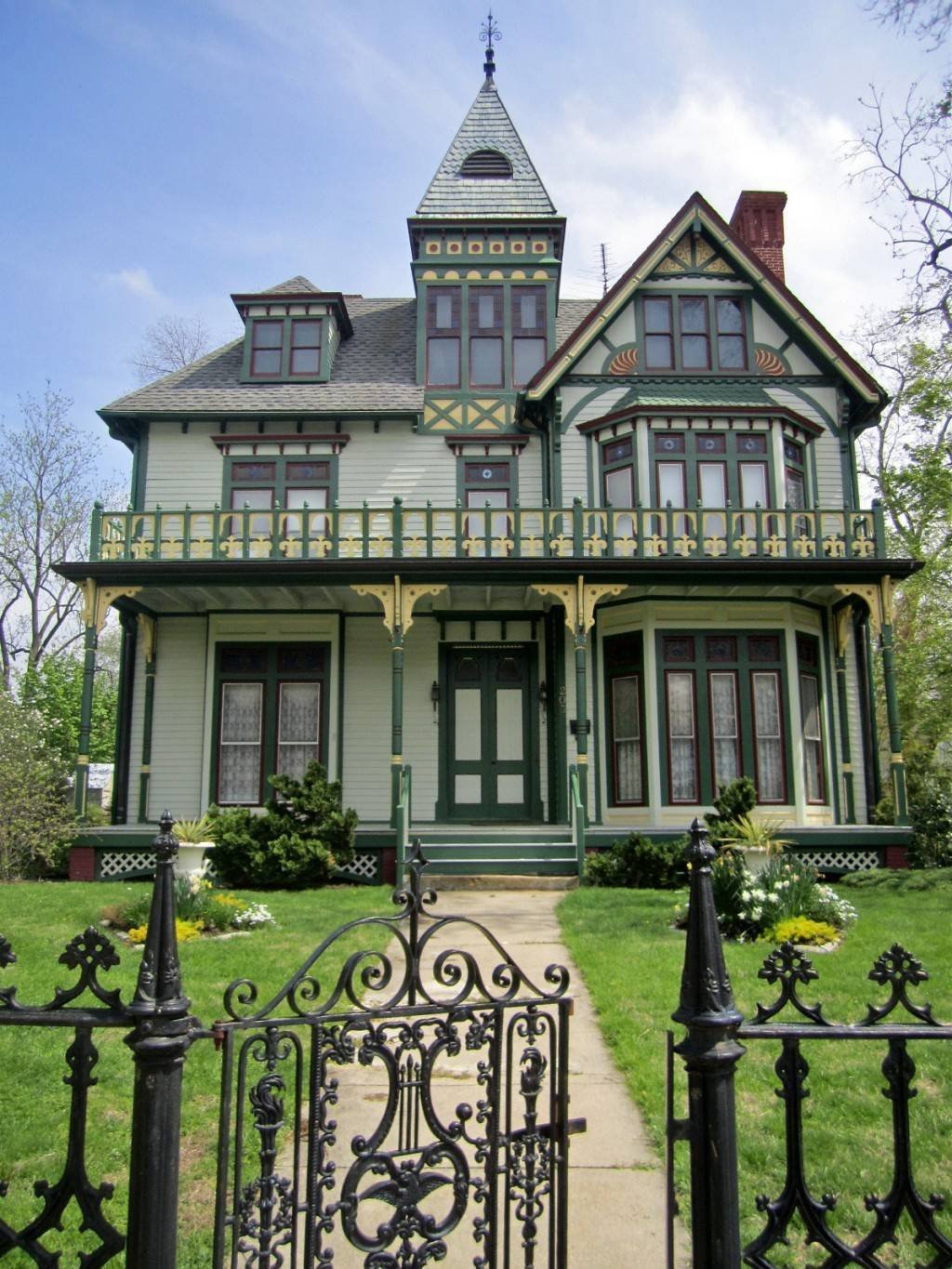#14249. Victorian Queen Anne Façade: Polychromatic Palette and Decorative Richness

Before us stands a magnificent example of Victorian-era architecture, specifically the Queen Anne style with its characteristic eclectic elements. The façade presents a symphony of decorative details, with the asymmetrical composition dominated by a tower crowned with an elegant spire and weathervane.
Particularly noteworthy is the rich color palette of the façade, built on a combination of light green as the main tone with dark green and yellow accents. This polychromatic approach is typical of late Victorian architecture. The façade's decorative elements include carved brackets, patterned porch railings, half-timbering on the gables, and ornamental window frames.
The front porch with its decorative columns and intricate elements creates a transitional space between exterior and interior, characteristic of American Victorian homes. Large windows with decorative casings provide abundant natural light to the interior spaces, while the bay window on the right side of the façade adds volume to the composition.
When designing a modern façade, one can borrow several techniques from this historical example: using a contrasting color scheme to emphasize architectural details, applying decorative elements to create an interplay of light and shadow, and employing asymmetrical composition to give dynamism to the entire appearance of the building.